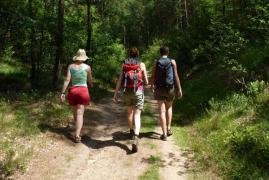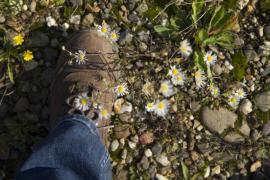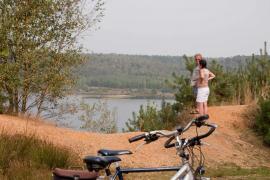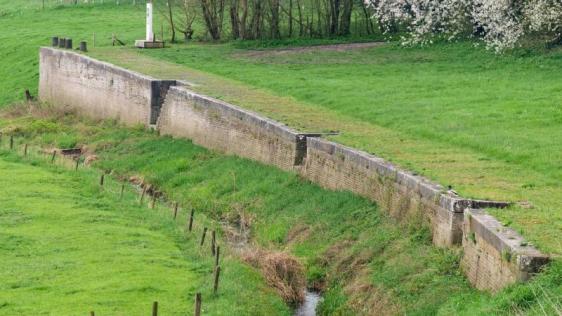
The landscape in the Meuse Valley was sculpted by the Meuse. For many centuries, habitation also developed in relation to the capricious river. The landscape is characterised by a number of special relics, of which the old Meuse arms or compact Meuse villages are examples. Did you know that a T-street pattern ('half' villages whose church is not in the middle) or a semi-circular road or stream (following an old meander) are typical of the Meuse Valley?
In the 20th century, the landscape underwent enormous changes, including large-scale gravel extraction, mining, agricultural scaling-up, population growth and urbanisation. These phenomena are also readable in the landscape. Moreover, shipping on the Meuse disappeared because the Zuid-Willemsvaart, Albert Canal and Juliana Canal were much more stable for the ever-growing ships. In some places, however, you can still see quays and ferry landing stages that bear witness to Meuse navigation. From Maaseik onwards, pleasure boats are allowed today, the rest (Maastricht to Maaseik) remains unnavigated.
Meuse heritage
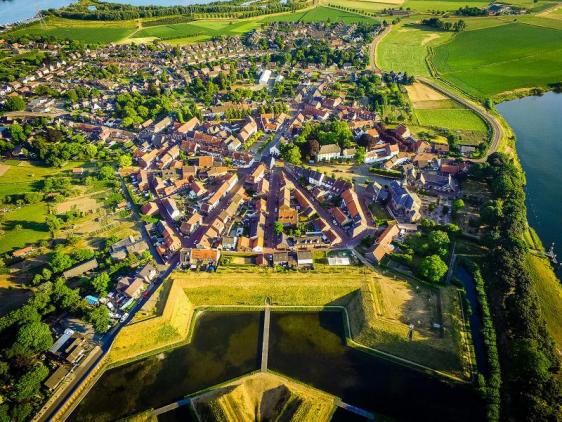
A lot of typical Maasland heritage is protected. Think of the city centres of Thorn, Stevensweert, Maaseik or Oud-Rekem, but also the castle landscapes of Leut, Ommerstein, Grevenbicht, Borgharen, Elsloo... You will also find mills, bunkers and cultural landscapes.
Through excavations and finds found during river restoration work, the soil archive tells a story of successive civilisations and their contacts (and conflicts) across the river. The horse grave of Borgharen, finds from Roman villas, Viking swords... are unlocked in various archaeological collections in the Euroregion.
More heritage?
- Via Land Development (Flemish bank), efforts are being made to upgrade Meuse villages, restore heritage greenery, monuments or slow roads.
- In 2022, heritage actors from both banks organised the 'Meuse Congress' in which both archaeology and the history of man and Meuse were extensively discussed, and which you can watch in full on our Youtube channel.
- With the Erfgoedapp or the app Archeoroute Limburg, you can explore the past of the Meuse valley for free
If you really want to know everything about the history of man and Maas in the Meuse Valley River Park, read the Landscape Biography.

